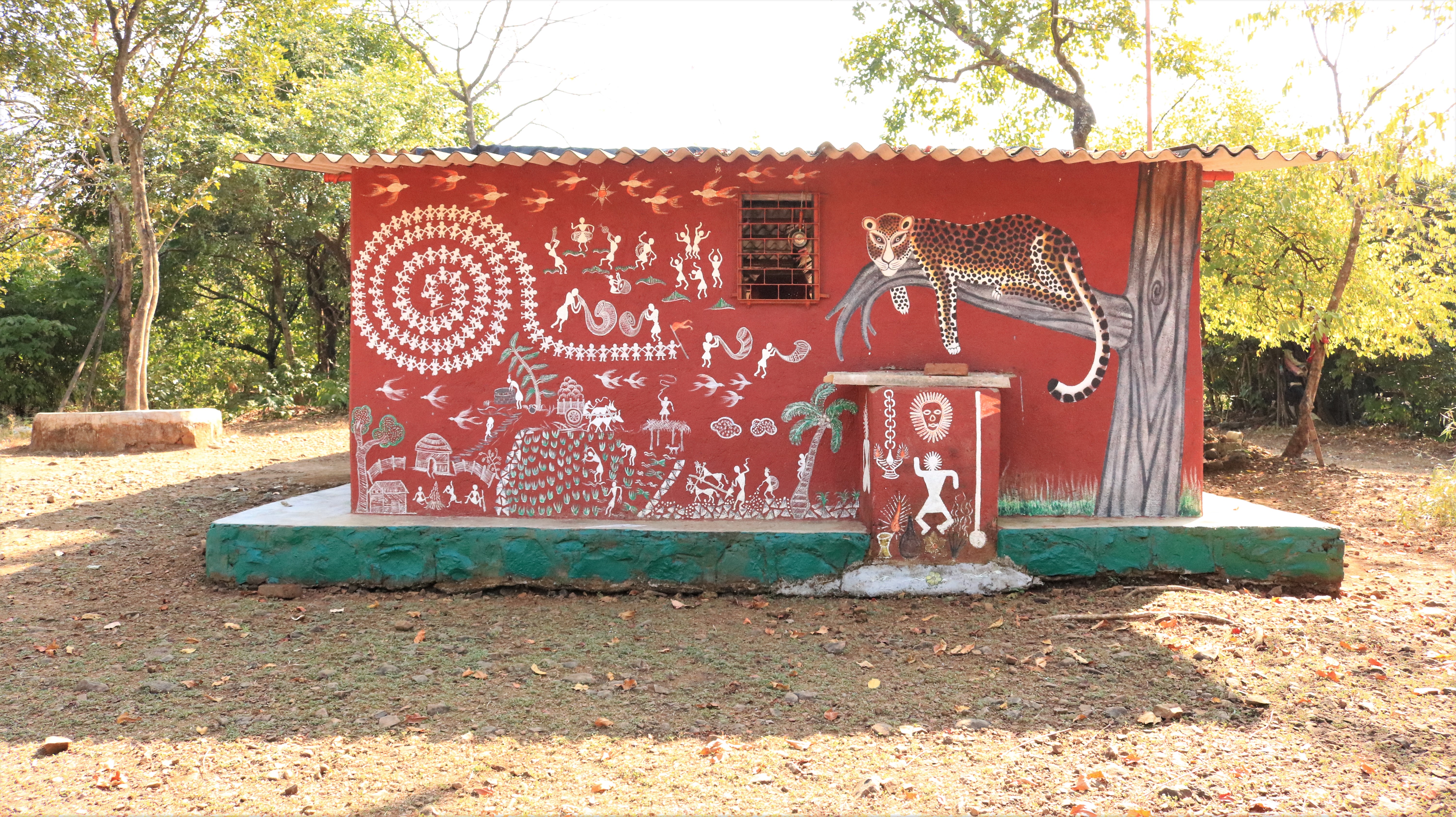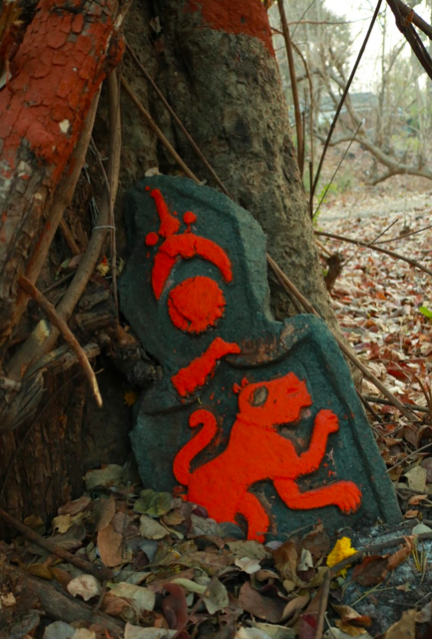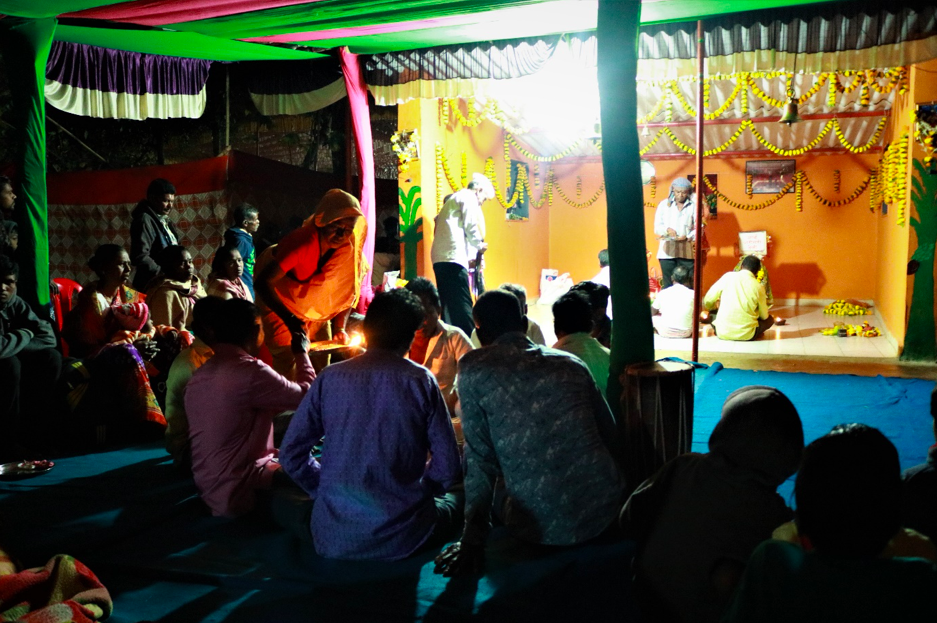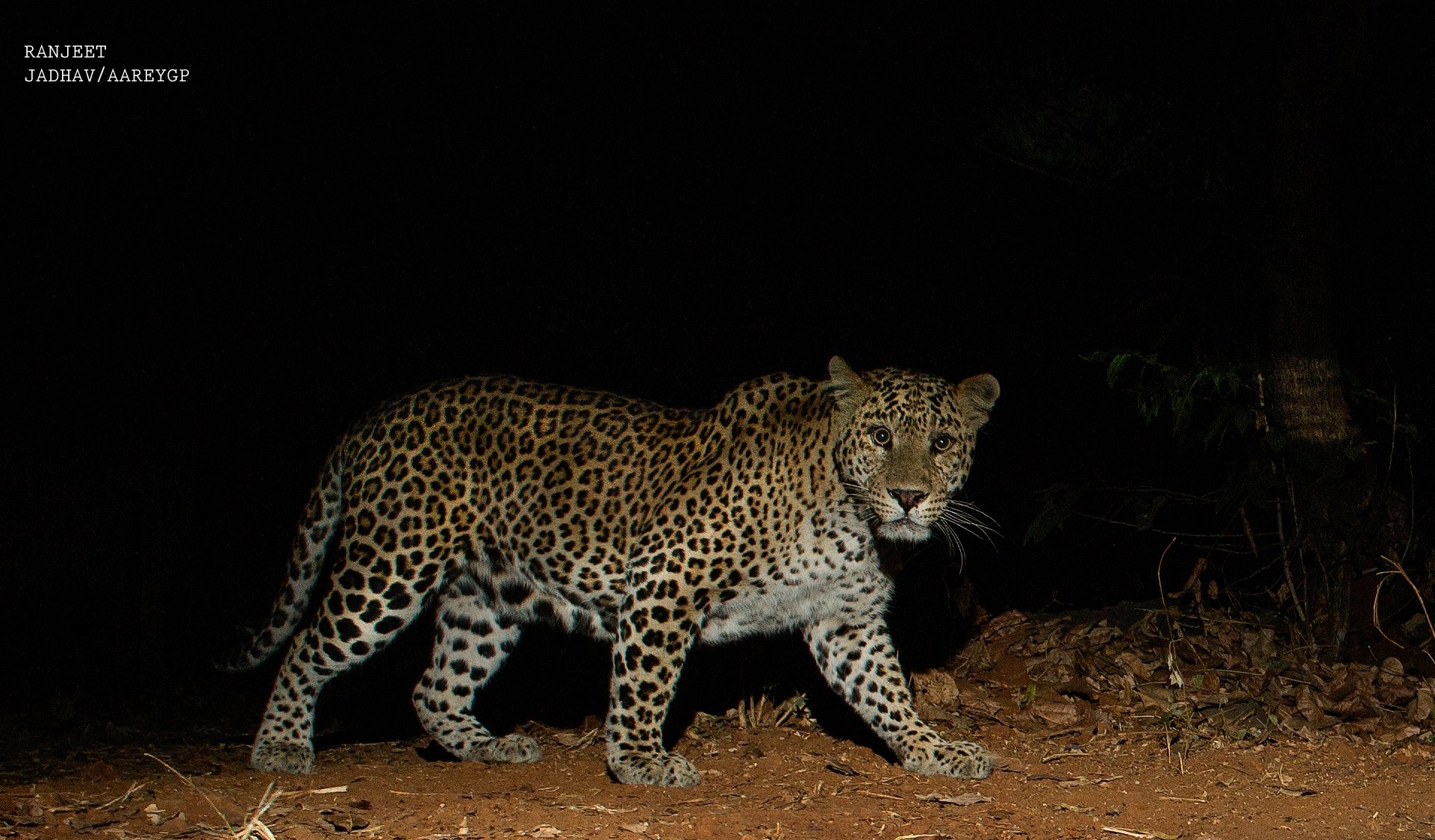Long histories of sharing space and resources have built complex, robust, and enduring relationships between humans and wildlife in many communities across the world. Among the Indigenous Warli of Maharashtra, such relationships manifest in the institution of Waghoba, the big cat deity. A form of both, the tiger and leopard, Waghoba is worshipped primarily for protection from these big cats. Researchers documented 150 shrines dedicated to Waghoba in their study titled "Sharing Spaces and Entanglements With Big Cats: The Warli and Their Waghoba in Maharashtra, India". Authored by Ramya Nair, Dhee, Omkar Patil, Nikit Surve, Anish Andheria, John D.C. Linnell and Vidya Athreya, this paper was recently published in a special issue of the journal Frontiers of Conservation Science-Human-Wildlife Dynamics called Understanding Coexistence with Wildlife.

Warli painting © Ramya Nair
The study was conducted by the researchers from our organization, Norwegian Institute for Nature Research, Norway, Inland Norway University of Applied Sciences, Norway and supported by Wildlife Conservation Trust. Fieldwork was conducted across Mumbai Suburban, Palghar and Thane districts of Maharashtra in 2018-19. An ethnographic approach was taken to collect data wherein researchers conducted semi-structured interviews and conducted participant observation (particularly attending worship ceremonies) concurrent to documenting Waghoba shrines. Questions were asked to explore narratives on the role of Waghoba in the lives of the Warli, the history of Waghoba worship, associated festivals, rituals and traditions, and the ties between Waghoba and human-leopard interactions.

A stone Waghoba shrine © Ramya Nair
The study revealed that the Warlis believe in a reciprocal relationship, where Waghoba will protect them from the negative impacts of sharing spaces with big cats if the people worship the deity and conduct the required rituals, especially at the annual festival of Waghbaras. Researchers suggest that such relationships facilitate the sharing of spaces between humans and leopards that live in the landscape. The study also addresses the ways in which the range of institutions and stakeholders in the landscape shape the institution of Waghoba and thereby contribute to the human-leopard relationship in the landscape.

A Waghoba worship ceremony in Sanjay Gandhi National Park, Mumbai © Ramya Nair
The authors also state that "This is relevant for present-day wildlife conservation because such traditional institutions are likely to act as tolerance-building mechanisms embedded within the local belief system. Further, it is vital that the dominant stakeholders outside of the Warli community (such as the Forest Department, conservation biologists, and other non-Warli residents who interact with leopards) are informed about and sensitive to these cultural representations because it is not just the biological animal that the Warlis predominantly deal with".
The main aim of the study is to diversify the way we understand and approach human-wildlife interactions. It does so by shedding light on how local institutions that contribute to co-existence are not devoid of conflict, but have a role in negotiating the conflicts that arise.

© Ranjeet Jadhav
Locally produced systems that address issues surrounding human-wildlife interactions may exist in several other cultures and landscapes. While conservation interventions have shown a movement toward the inclusion and participation of local communities, we have to recognize that landscapes have a history before our own point of entry into them.
The study can be accessed at https://bit.ly/3wM3FWm